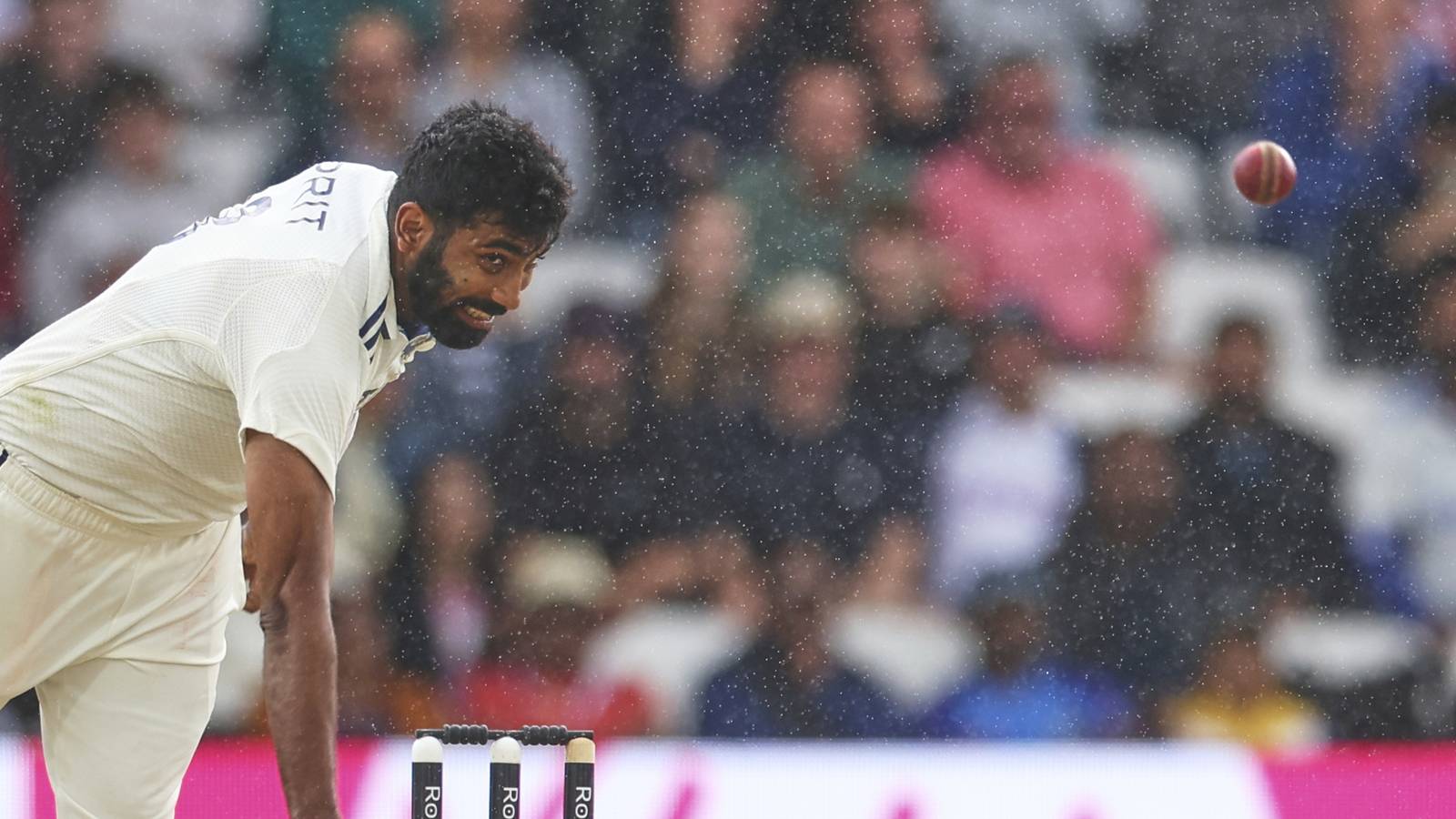ARTICLE AD BOX
A couple of days before the second Test, Yashasvi Jaiswal faced Kuldeep Yadav at the nets. Before walking across to the spin nets, he had dominated the pacers, in the way openers love to do. But Kuldeep would con him with a ball that suddenly dipped mid-air. Jaiswal couldn’t keep his drive under check, and had there been a silly mid-off in place, he would have caught the ball easily. Jaiswal knew this, he hit his pads with the bat in consternation.
Kuldeep didn’t really celebrate. He turned and returned to his run-up. Kuldeep seemed resigned to his fate, bowling well at nets wouldn’t get him a place in the playing XI. He seemed to have been sounded off – like at Headingley, that unless there is a last-minute change of heart, he would be sitting out for Edgbaston too. About a couple of hours later, India’s coach Ryan ten Doeschate gave ample tip-offs to convey that Kuldeep would miss out.
For the second time in two Tests, India’s most impressive bowler at nets might fail to make the cut. Not being a bonafide all-rounder might go against him one more time. Being a one-skill cricketer is a handicap in a team that values run-makers more than wicket-takers. In the Gautam Gambhir-Shubman Gill era, bowlers who can bat are higher in the hierarchy than bowlers who actually take wickets. General Practitioners are busy, while Specialists are twiddling their thumbs.
India went in with two all-rounders – Ravindra Jadeja and Shardul Thakur – at Headingley. If the clues from the nets and Doeschate’s broad hints are to be believed it would be three at Edgbaston – Nitish Kumar Reddy, Washington Sundar and Jadeja. The non-batsmen– Kuldeep and even left-arm pacer Arshdeep Singh – have consistently bothered batsmen at the nets but in all likelihood they will continue to be on drinks duty on match days.
India seems to be playing the longer format with a limited-overs vision. Not quite the Twenty20isation but this certainly is the ODI-fication of Tests. Try taking wickets with specialists at the start, bringing them back when the ball gets old. For the middle-overs, throw the ball to part-timers, give them small spells. All this to pack the playing XI with batsmen and out-bat the opposition. India’s sheer whites, these days, seem to have a dark shade of blue in the lining beneath.
Longer format cricket is a wicket-taking race, not merely a run-marathon.
No Test has been won without taking 20 wickets. Historically, the movers and shakers of Test matches are the specialists. The two all-rounders that India plans to play in the Test – Nitish and Washington – can be expected to keep the run-flow in check, maintain pressure for the main bowlers to take wickets or be the partnership breakers. They can’t be expected to run through this England side.
Story continues below this ad
Even the third all-rounder, Jadeja, has sparkling red-ball numbers but has struggled to take wickets in England. Finger spinners, however skilled, struggle to turn on turfs with a heavy grass cover but Jadeja has even failed to exploit the rough on the final day.
Wrist spinners, meanwhile, can get the ball to break even on cement, forget the thick grass carpet that England has laid down for the visitors. Kuldeep has been doing that on the practice pitches. Besides, as Jaiswal’s net-session dismissal showed, he also has the skill to minimise the role of pitch in the game, removing the 22-yards from the wicket-taking equation. Deceiving the batsman in the air, with the revs he gives, is his potent weapon. In the past, the English have been his victims, and a few key batsmen in the present team might still be dealing with the Kuldeep trauma.
Bring out the old tapes of the last England and India Test before this series. The game was at Dharamshala and that March of 2024 wasn’t too different from the June-July of England this year. There would be sun but it would also get cloudy and windy too. The pitch there wasn’t green nor was it a turner. Under such spin-unfriendly conditions, Kuldeep foxed the English batsmen with his guile.
First Test centurion Ollie Pope had problems reaching to the pitch of the balls that Kuldeep tossed up and altered their lengths. Wicket-keeper Dhruv Jurel would notice the restlessness in batsmen. Before one ball, he would announce: ‘Aage badhne waala hai (He is about to step out).” Cue to Kuldeep, he would pull his length back and bowl his wrong ‘un. Pope was stranded, almost on the middle of the pitch.
Story continues below this ad
Ben Stokes was caught on the crease, not sure if to go forward or be in the crease to a perfectly pitched Kuldeep wrong ‘un. He was lbw unable to read the back of the hand ball that came in sharply into the left-hander. Others too were not able to read Kuldeep from their hand, and their ‘sweep, and reverse sweep’ plan also didn’t work against the wrist spinner with lateral and over spin. Openers Ben Duckett and Josh Crawley too were his victims.
World Test champions South Africa continue fielding genuine all-rounders, but from Jacques Kallis back in the day to Wiaan Mulder, the quality of their primary skill is equal to batting of a Top 4 or bowling of the first-four strike bowlers. India, though, needs specialist bowlers who can take wickets, before factoring in their batting contributions.
Arshdeep hasn’t yet played a Test but has the look and feel of a bowler who can do well in England. Even with the white ball, he keeps the balls up and looks for swing. In the nets he was hitting that ideal England length, the one most Indian pacers struggled to target at Headingley. So shouldn’t he be tried? But then, he doesn’t bat too.
India continuing with their obsession of a long batting line is either foolhardy or a purely defensive tactic. Even the ‘field a heavy duty batting team and look for a draw’ plan, since Jasprit Bumrah is expected to miss this Test, is riddled with risk. Also the all-rounders who played the Test at Leeds – Jadeja and Shardul Thakur – too had no significant contribution with the bat.
Story continues below this ad
India scored 471 in the first innings. Of course, runs in first innings are never enough and the late order should have contributed more but it was an above-average total for any Indian team abroad. What India lacked was wicket-takers and bowlers who would perform in England conditions. More all-rounders means more of the same.
History comes in handy when dealing with a crisis. What did India do right when they last won in England? That was in 2007 and the playing XI of the final Test of the series was Dinesh Karthik, Wasim Jaffer, Rahul Dravid (c), Sachin Tendulkar, Sourav Ganguly, VVS Laxman, MS Dhoni, Anil Kumble, Zaheer Khan, RP Singh and S Sreesanth.
This isn’t about comparing the class of players then and now, it’s about understanding the ideal composition to win a Test in England. India needs pure specialists who can bowl or bat a bit, not diet all-rounders who can do a bit of both. It works in ODIs or T20s, not in Tests.



.png)
.png)
.png)

























 English (US) ·
English (US) ·